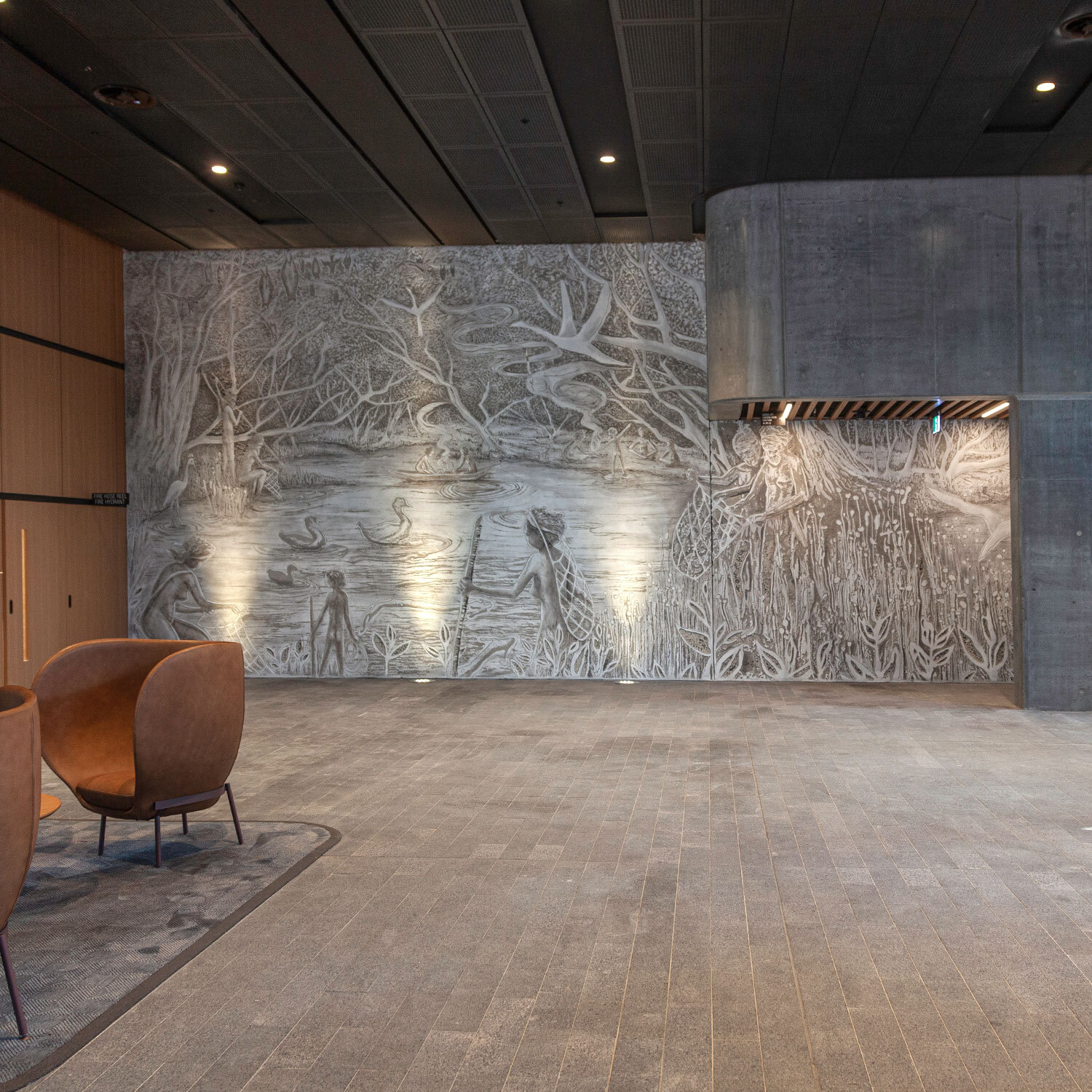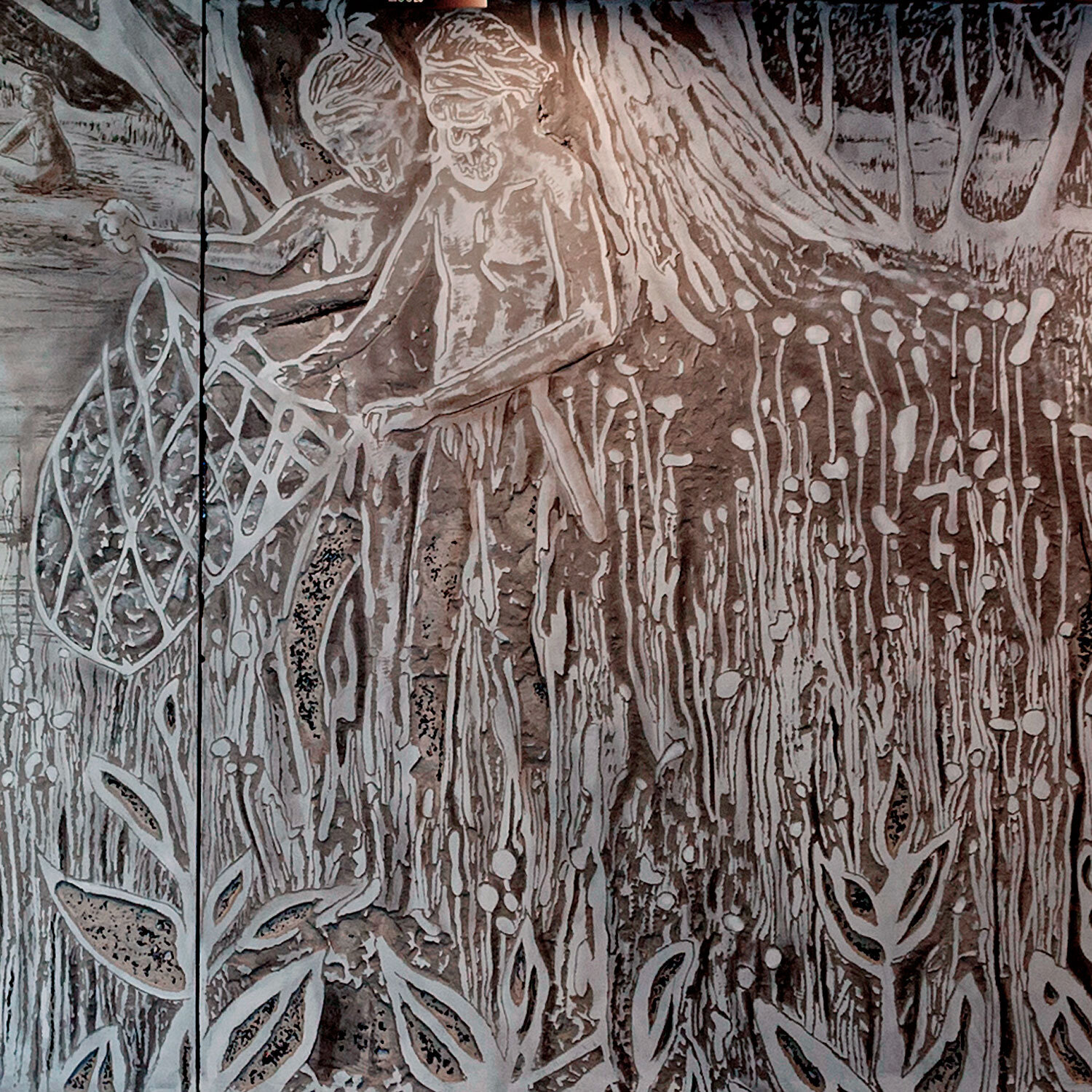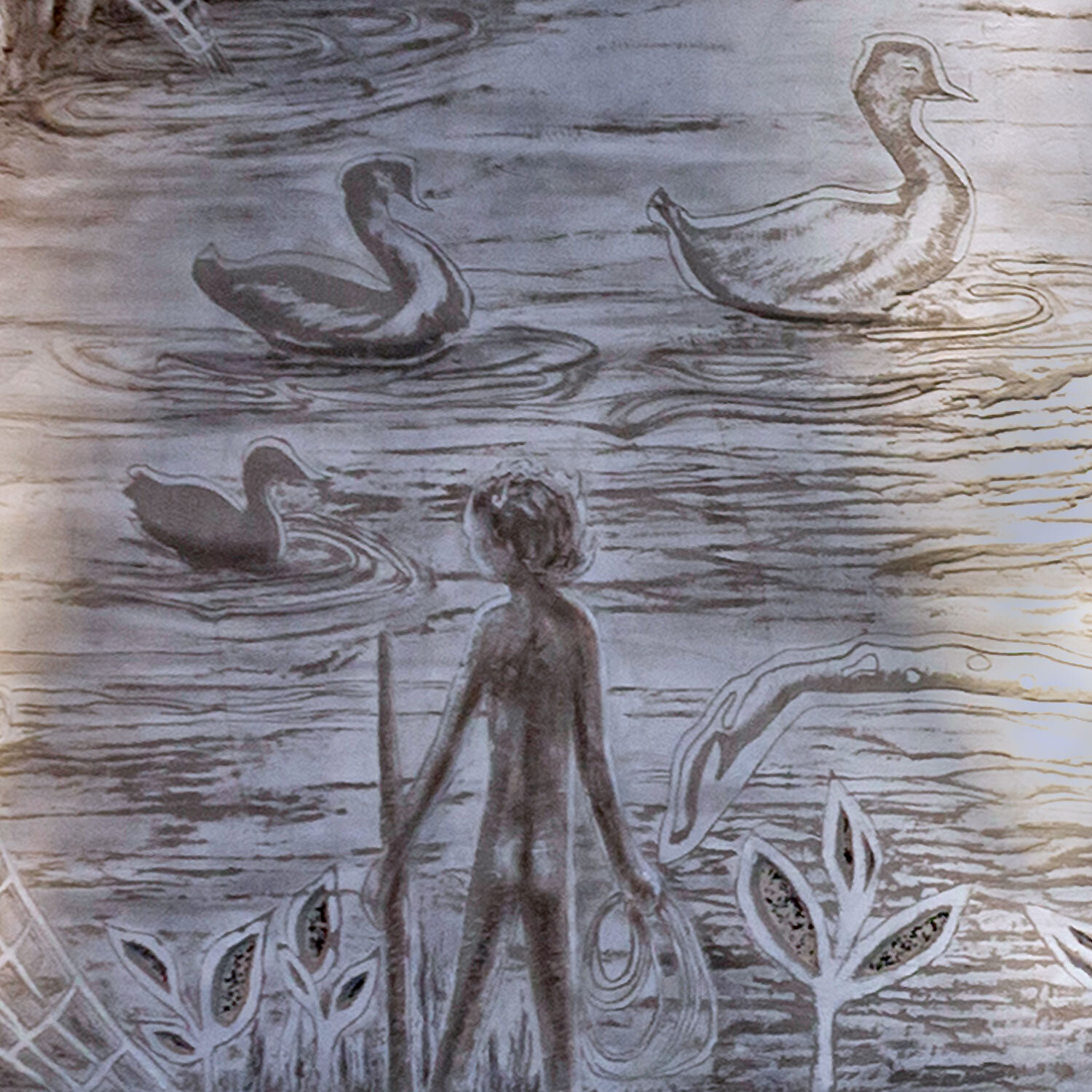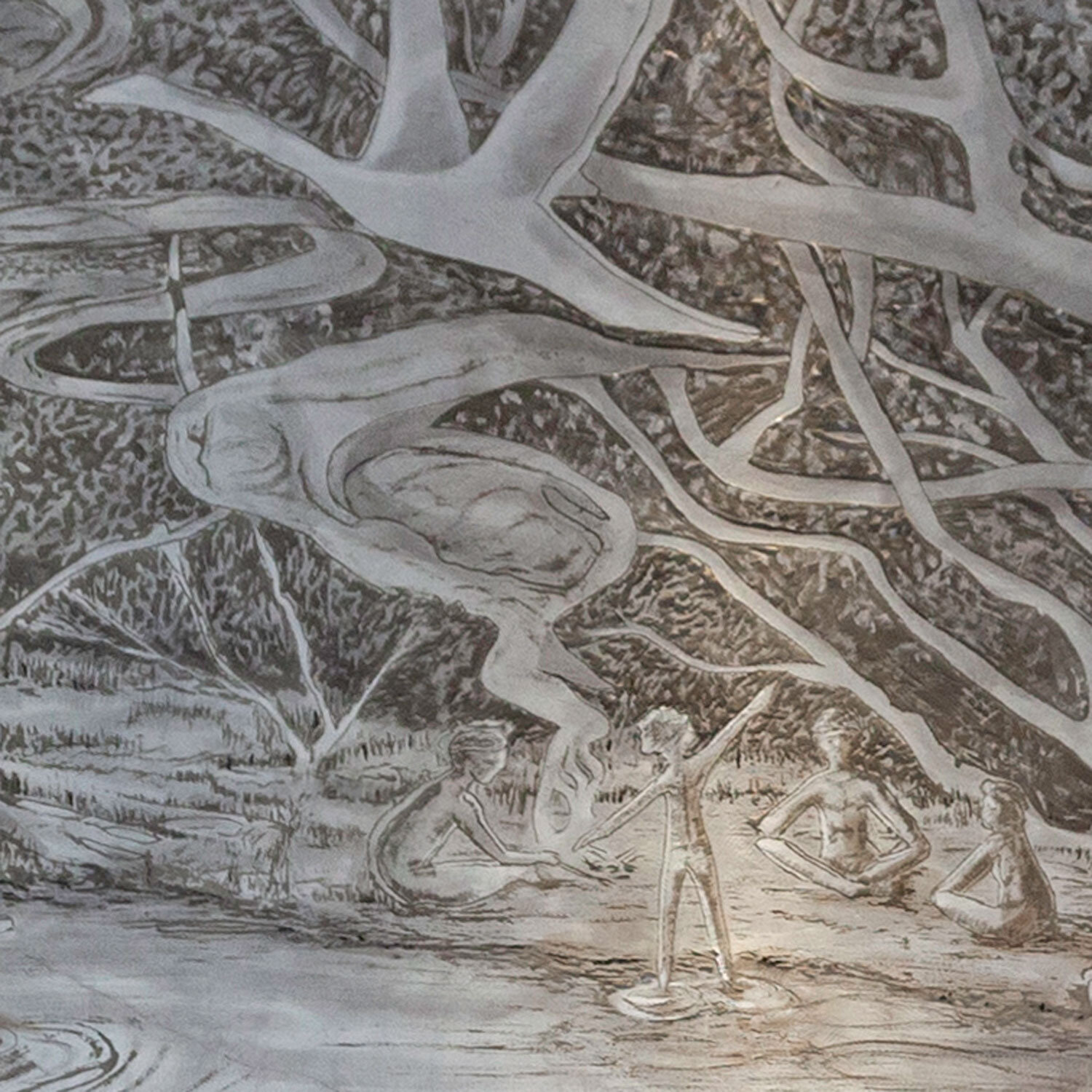32 Smith Subtractive Wall Art Depicts Indigenous Connection to Parramatta Precinct
The GPT Group’s commercial tower, 32 Smith, occupies a prominent corner site at the northern gateway to Parramatta, connecting the river to the city. GPT acknowledges the Darug people as the Traditional Custodians of this land.
For thousands of years the Burramattagal, a Darug clan, lived along the upper reaches of the Parramatta River. The architects, Fender Katsalidis (FKA), have featured an 8m by 5m carved mural in the ground floor lobby, depicting the Darug people’s close connection to the river.
For the mural wall art, FKA wanted to employ a bas-relief technique used by Portuguese street artist, Alexandre “Vhils” Farto. The technique involves jack hammering away the surface of walls to reveal the layers beneath to create an image.
Darug woman and artist, Leanne Tobin, made the original sketches of Darug people fishing, cooking and canoeing along the Parramatta River. Di Emme was commissioned to transform the sketches into a jack hammered bas-relief.
Di Emme Manager, Mark Lovelock, said that translating the designs from sketches done on an iPad into subtractive wall art was a substantial process involving a lot of modifications along the way.
Transforming tonal sketches into subtractive wall art
“Leanne Tobin’s initial drawings were tonal, using a multitude of greys,” said Mark. “We knew we couldn’t do them justice using the proposed Vhils’ carving technique, so Leanne spent time adjusting her artwork to suit the bas-relief technique.”
“Di Emme completed 90cm2 samples in our studio for the artist and client. From these we were able to confirm the detail achievable in the artwork and the best render thickness.”
Gradations of render
“We used hard base render tinted black, topped with a softer grey-tinted render. The quality of the render was important to the success of the project and we worked with a very skilled renderer who we have worked with on previous projects.”
“We used a projector to chalk in the artwork on the site walls. It took two weeks of jack hammering to bring the artwork to life.”
Finessing the artwork
“Finessing the artwork involved a lot of interpretive work and considerable expertise. Our artist had to use a variety of tools to carve into the render. They jack hammered to different depths and used needles to graze the surface to reveal the grey render beneath.”
“Leanne Tobin provided encouragement along the way and came on site to guide us and to ensure her artwork was produced to her intention. The final days were spent applying colour washes to add further tonal variants.”
“Once, we were all satisfied with the image we applied a clear sealant to stabilise the render.”
The finished mural is a striking reminder of the Indigenous connection to place.
Watch the video on the making of the 32 Smith carved wall mural




